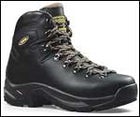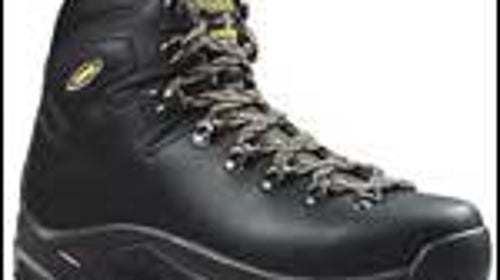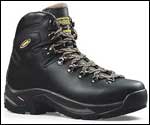Actually, ten years of use out of a boot is pretty good, particularly for a mid-weight boot such as the old AFX 530. It wasn’t terribly uncommon for boots made around then to “de-laminate,” as the cement used to hold the whole thing together, in time, simply failed. The 530 was a first- or second-generation boot using that form of construction, and as you’ve learned there were some engineering issues. But a decade? I’ll still argue that’s pretty good.
 TPS 535
TPS 535
In any event, I wouldn’t hesitate to buy another Asolo boot. The descendant of your old 530s is the TPS 535 ($175, www.asolo.com), an all-leather boot with a shock-absorbing sole. If Asolo is willing to sell you one at wholesale, go for it. Or, for something new, try the Asolo Fugitive ($165), a sturdy, waterproof boot that’s designed specifically for backpacking with moderately heavy loads.
I’d also recommend Montrail’s Blue Ridge GTX ($175, www.montrail.com), which like the Fugitive has a Gore-Tex liner to keep out water (the 535 relies on water-resistant leather for that task). Montrail boots seem to fit a lot of different people, so you might have good success with it.
For something really cool, particularly if your ankles are less sturdy than they once were, try on some Lowa Biomex Vertex boots. These have an integrated plastic cuff that cradles the ankle and resists deflection, so you’re less apt to roll over on an ankle. They’re just the ticket for backpacking, and are both light and comfortable. Not the cheapest boots around at $225 (www.lowaboots.com), but for some, well worth it.
Read more boot reviews in ���ϳԹ���‘s
, including the Lowa Vertex, “Gear of the Year” in the boot category.


